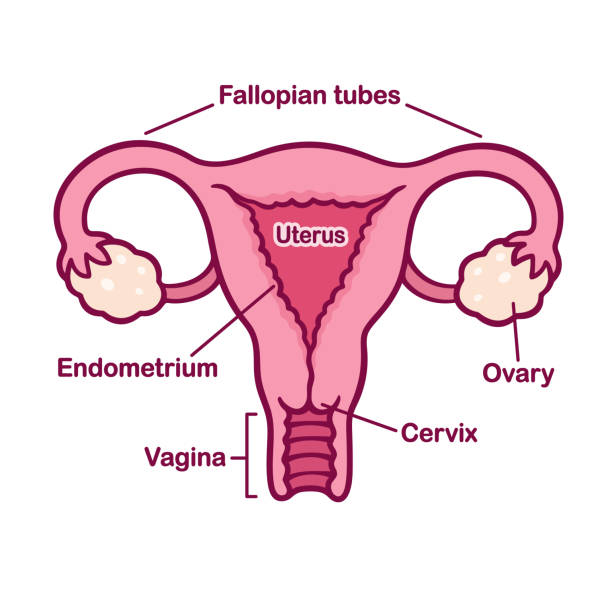Cancer can be an uncomfortable topic for anyone. When it comes to such a major health issue, the natural human response might be to clam up or avoid the subject altogether. However, awareness plays a huge factor in preventing all types of cancer, and cervical cancer is no different.
Cervical cancer used to be the leading cause of cancer in women in the United States, but we’ve come a long way in terms of prevention. By educating and encouraging women to take the steps below, we’ve drastically reduced this number.
The good news is cervical cancer is preventable, and our team at Memphis Obstetrics & Gynecological Association is here to tell you how. Keep reading to learn more about our four steps to prevent cervical cancer.
#1. Learn About Cervical Cancer
Awareness is one of the best ways to prevent any form of cancer, including cervical cancer. It can sometimes be scary to approach the topic, but it will ultimately keep you safe in the long run.
What is Cervical Cancer?
Cervical cancer affects the cells at the opening of the cervix or the lower part of the uterus. Each of these cells is coded with information that tells them when to grow and when to stop, and each signal is necessary for their proper functioning. However, proteins in the HPV virus can interfere with the function of these cervical cells, causing them to continue growing without stopping. This rapid growth is what causes cervical cancer.

According to the National Foundation for Cancer Awareness (NFCR), 12,000 women are diagnosed with cervical cancer every year. Of those, approximately 4,000 women die from cervical cancer. 99% of these cases are caused by human papillomavirus or HPV.
Symptoms
There are several symptoms of cervical cancer to watch out for. Although these symptoms don’t necessarily mean you have cervical cancer, you should report them to one of our doctors if you notice you’re experiencing one of them.
Symptoms include:
- Increase in vaginal discharge
- Pain during sexual intercourse
- Pain when urinating
- Persistent pain in the pelvic region or back
- Light bleeding between periods
- Heavier or longer menstruation cycles
- Bleeding after menopause
#2. Get Vaccinated for HPV
HPV is a highly common sexually transmitted disease that affects nearly every person in the United States. Although there is no cure for HPV, vaccination can prevent you from ever getting it in the first place.
The HPV vaccine is available to anyone as early as age nine to age 26. We provide the vaccine in two doses for those between the ages of nine and 15. If you’re over the age of 15, you’ll receive three doses. The earlier you or your child gets the vaccine, the better protection it provides against cancer.
#3. Get Regular Screening From MOGA
To prevent cervical cancer, you’ll need to get tested for HPV and undergo a PAP smear regularly. Consistent testing for cervical cancer allows your MOGA team to evaluate your risk for cancer, detect precancerous cells, or catch cervical cancer early for the best treatment outcome.
All women and individuals with cervixes should receive regular PAP smears every three years, beginning at age 21. A PAP smear allows your doctor to sample the cells in the lining of your cervix to test for abnormalities. Our doctors can track your risk factors and ensure your body is happy and healthy by testing you every three years.
You should also begin testing for HPV at age 25 and continue testing every five years until age 65. An HPV test is very similar to a PAP smear, and in some cases, your doctor can complete both exams at one time.
When to Stop Screening
Most women should follow the guidelines above exactly as stated. However, once you reach the age of 65, you do not need to continue screening — that is, unless you’ve had an abnormal screening in the past 25 years. If that is the case, you should continue screening for 25 years after your last abnormal test.
You no longer need regular cervical screening if you’ve had a total hysterectomy. However, if you’ve had a partial hysterectomy, you should continue screening regularly.
It is a misconception that women should stop screening after having children — this is not the case. You should continue screening even after having children by following the guidelines above.
#4. Eliminate Controllable Risk Factors
Another good way to prevent cervical cancer is to eliminate as many risk factors as you can reasonably control.
HPV
Limiting the possibility of contracting HPV significantly reduces your chance of contracting cervical cancer. When engaging in sexual intercourse, wear a condom to prevent the spread of HPV. You may want to limit the number of sexual partners you have or avoid partners who have had many sexual partners. Make sure to get the HPV vaccine as early as possible.
Smoking
Smoking is a risk factor for many types of cancer, including cervical cancer. You can limit your risk of developing cervical cancer by quitting or avoiding smoking altogether.
Oral Contraceptives
Birth control pills increase your risk for cervical cancer. Oral contraceptives can double your risk of developing cervical cancer after five years of use. Be sure to talk with one of our doctors at MOGA about your birth control options. 
Trust Your Team at Memphis Obstetrics & Gynecological Association, P.C.
Discussing the risk factors and possibilities for cervical cancer can feel uncomfortable, but our team has the knowledge and expertise to help put your mind at ease. Whether you’re 25 and ready to start screening or have experienced symptoms you want to discuss with a doctor, our team is here for you.
With locations in Memphis, Germantown, Bartlett, and Southaven, and dozens of doctors and nurses, we make treatment flexible and accessible. Contact us to schedule an appointment today!


